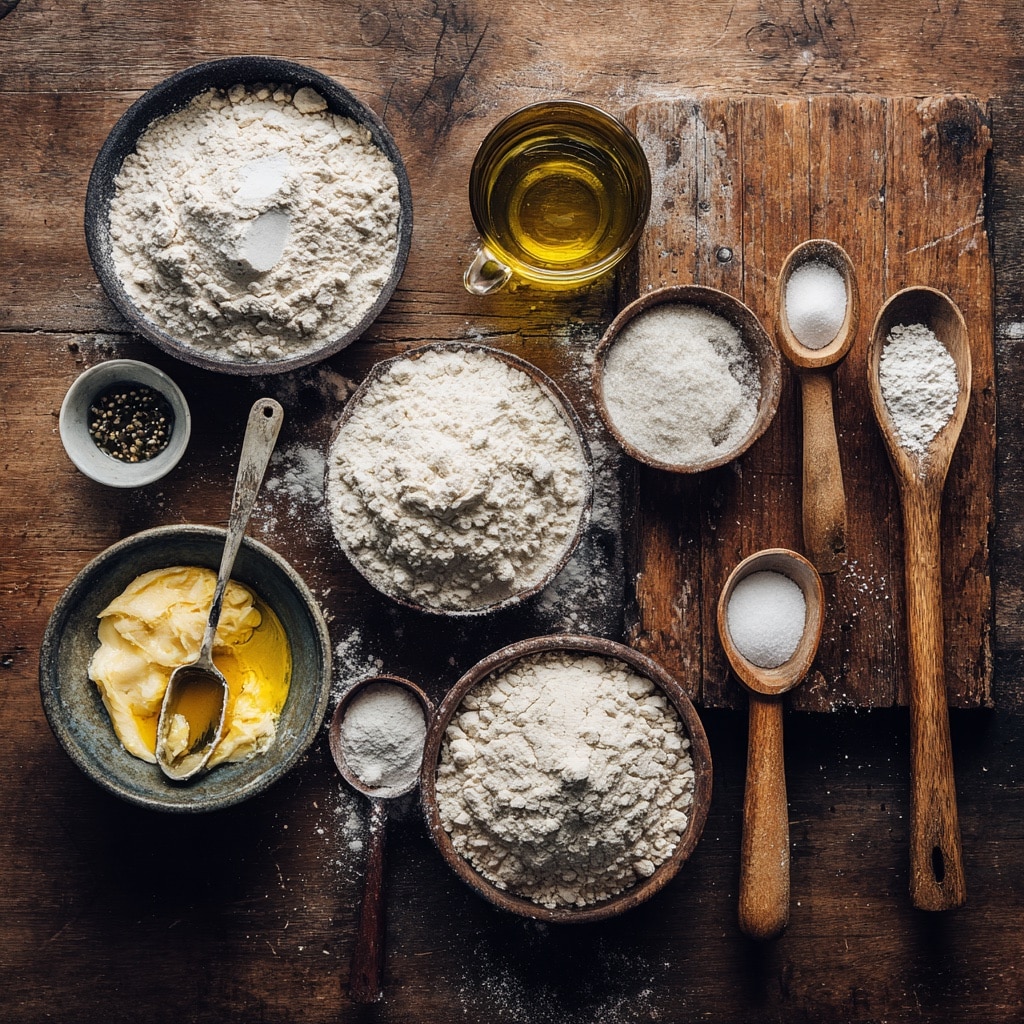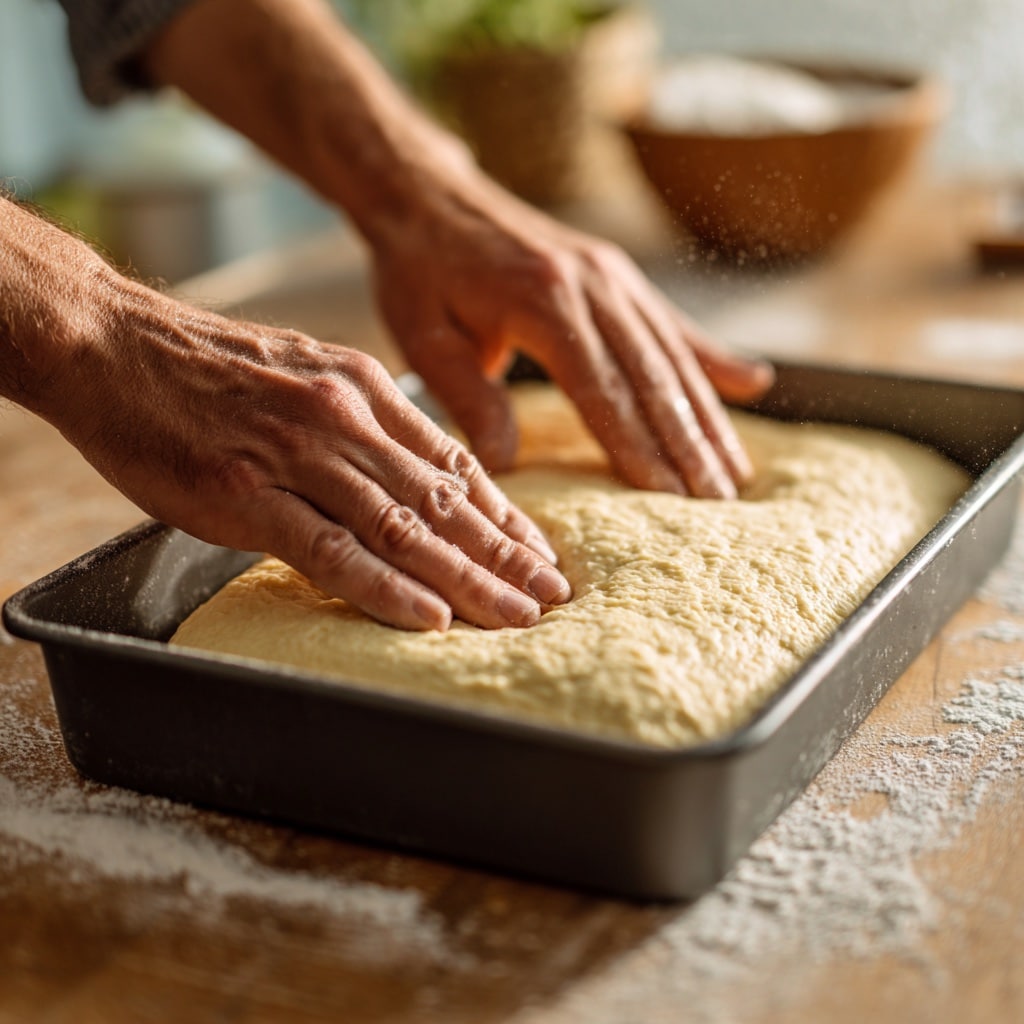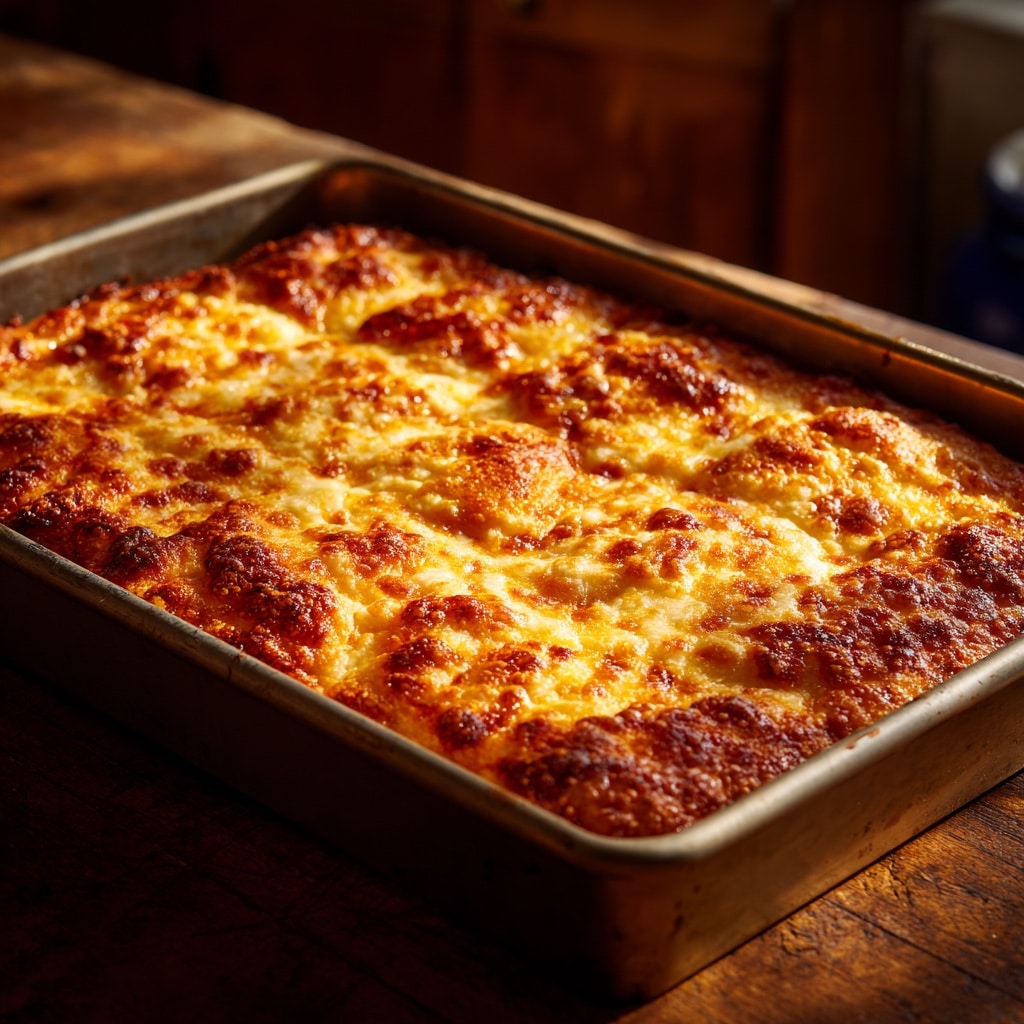Why I Fell in Love with Sicilian-Style Pizza
If you grew up in a house like mine, you probably didn’t have “normal” pizza nights. My mom was Moroccan, and while she could roll out a mean flatbread in five minutes, she always had a soft spot for anything doughy and golden. My dad was the all-American grill guy—burgers, ribs, deep-dish pizza once in a while. But one day, I saw her lay a thick, airy square of dough in a baking pan, cover it with olive oil, sauce, and cheese, and call it pizza. That was my first taste of the real deal—a Sicilian pizza dough recipe passed down from a neighbor friend of hers in Brooklyn.
That crust was something else. Not chewy like a New York slice. Not thin like a Neapolitan. This one had a bite. It was crispy on the bottom, fluffy on the inside, and could hold a mountain of toppings without breaking. That day changed how I viewed homemade pizza. And now, after years of experimenting, I’ve landed on the easiest, most reliable Sicilian pizza dough recipe you can make at home.
You don’t need fancy tools. No pizza peel, no pizza oven. Just a simple sheet pan, some time, and a few pantry staples. We’ll go step by step, from mixing the dough to parbaking it, then topping it your way—veggies, pepperoni, jalapeños, whatever makes your crowd smile.
The key to this Sicilian pizza dough recipe is parbaking. Trust me, it’s the game-changer. It lets the crust firm up before you add toppings, keeping everything crisp, not soggy. The dough itself is soft and easy to work with. You’ll mix it by hand, let it rise in the fridge, then stretch it gently into a buttered and oiled pan. No kneading, no stress.
And that’s the beauty of this dough—it’s forgiving. Whether you’re cooking for two or twelve, it scales well. You can even keep it in the fridge for up to three days, so dinner’s half done when you need it most.
If you’ve never tried making Sicilian-style pizza at home, this is your moment. It’s rich, satisfying, and just different enough to become your new favorite. Let’s dive into the real secrets of this Sicilian pizza dough recipe—because every family deserves a crust they can count on.
Want a classic tomato base for your pie? Try our homemade marinara sauce or start with a fluffy focaccia dough base for another variation.
Print
Sicilian Pizza Dough Recipe: The Simple Secret to a Crust You’ll Crave
- Total Time: 40 minutes (plus rise time)
- Yield: 1 large 12×18 pizza (feeds 6–8) 1x
- Diet: Vegetarian
Description
This Sicilian pizza dough recipe creates a thick, airy crust with a crispy bottom and chewy interior. Ideal for pan pizzas, it’s perfect for family dinners, gatherings, or freezing ahead.
Ingredients
4 cups bread flour (512g)
2 tsp instant yeast (8g)
2 tsp kosher salt (12g)
2 cups lukewarm water (455g)
Olive oil (for coating and baking)
Butter (optional, for greasing pan)
Instructions
1. Whisk together bread flour, instant yeast, and salt in a large bowl.
2. Add lukewarm water and mix until a sticky dough forms.
3. Cover and refrigerate for 18–72 hours.
4. Bring to room temperature, fold into a ball, and rest 20 minutes.
5. Grease a 12×18 sheet pan with olive oil and butter.
6. Stretch dough into pan. Let rise 2–3 hours until puffy.
7. Preheat oven to 500°F. Dimple dough and parbake for 10–12 minutes.
8. Cool slightly. Top with sauce, cheese, and desired toppings.
9. Bake at 475°F for another 10–12 minutes until bubbly and golden.
10. Let cool 5–10 minutes, then slice into squares and serve.
Notes
Dough can be made up to 3 days in advance and refrigerated.
You can parbake the crust a day ahead, then finish baking with toppings later.
Use bread flour for best results, though all-purpose can work with slight texture changes.
- Prep Time: 15 minutes
- Cook Time: 25 minutes
- Category: Pizza
- Method: Baking
- Cuisine: Italian-American
Nutrition
- Serving Size: 1 slice (1/20 of pan)
- Calories: 180
- Sugar: 0g
- Sodium: 290mg
- Fat: 4g
- Saturated Fat: 1g
- Unsaturated Fat: 3g
- Trans Fat: 0g
- Carbohydrates: 30g
- Fiber: 1g
- Protein: 5g
- Cholesterol: 0mg
Making the Dough From Scratch
The Foundation of Great Sicilian Pizza Dough
If you want to master Sicilian pizza at home, it starts with the right dough. The Sicilian pizza dough recipe we’re using today creates a crust that’s thick, airy, and golden-brown on the bottom. It holds up to generous toppings and still delivers a soft interior crumb that tastes like comfort.
Sicilian dough is all about patience and simple ingredients. That means flour, water, yeast, salt, and olive oil—nothing complicated, just balanced ratios and proper handling. Let’s break it down.
Choosing the Right Flour: Bread vs. All-Purpose
You might be wondering what flour is best for a Sicilian pizza dough recipe. While you can use all-purpose flour, I recommend bread flour. It has a higher protein content, which builds stronger gluten strands. That’s what gives this dough its chew and structure.
Bread flour also browns beautifully, especially with a touch of olive oil in the mix. But if all-purpose is what you have, go for it. Just reduce the water by 1 to 2 tablespoons and expect a slightly softer result.
If you live in a humid area, bread flour also helps prevent the crust from becoming too soft or gummy after baking. That’s one reason why I always go with it, especially when prepping pizza for guests or freezing a batch for later.
Need more flour tips? Visit our complete flour guide for home bakers.
Yeast, Salt, and Water: Getting the Balance Right
This Sicilian pizza dough recipe uses instant yeast, which makes the process more forgiving. You don’t have to proof it first—just whisk it into the flour along with salt before adding water.
For the best results, use lukewarm water. Not hot. Not cold. Around 100°F is perfect to activate the yeast without killing it. Combine that with kosher salt, and you’ll build flavor before the first rise even begins.
Once your dough comes together, it will feel sticky. That’s a good thing. Don’t add more flour. This dough needs moisture for the final rise to create those signature air bubbles you see in real Sicilian pizza crust.
Want a step-by-step on prepping yeast-based doughs? See our easy yeast dough tutorial that walks through every phase.
Olive Oil: More Than Just Flavor
Olive oil doesn’t just add taste—it affects texture. In this Sicilian pizza dough recipe, olive oil coats the dough during its rise and helps it crisp when baked. The oil acts as a barrier between dough and pan, creating a golden crust that’s irresistible.
You’ll also use olive oil to help stretch the dough later, preventing sticking and keeping the surface moist. A lightly oiled hand is your best tool when handling this dough—don’t skip it.
A little butter in the pan with olive oil makes a big difference too. Butter brings flavor and color to the crust’s bottom. That combo? Crispy, rich, and bakery-level good.
Summary Table: Ingredients for Sicilian Pizza Dough
Here’s what you’ll need for one 12×18 pan:
Ingredients for Sicilian Pizza Dough (12×18 pan)
| Ingredient | Amount |
|---|---|
| Bread flour | 4 cups (512 g) |
| Instant yeast | 2 tsp (8 g) |
| Kosher salt | 2 tsp (12 g) |
| Lukewarm water | 2 cups (455 g) |
| Olive oil | To coat and bake |

From Bowl to Pan
Cold Fermentation: The Real Flavor Booster
Once your dough is mixed, the next step in this Sicilian pizza dough recipe is letting it rest—and not just for a few hours. The magic happens in the fridge. This process is called cold fermentation, and it gives the dough time to develop complex flavor while building a light, airy texture.
After mixing, lightly oil the top of the dough and cover the bowl tightly. Place it in the refrigerator and forget about it for at least 18 hours. But if you can wait 48 or even 72 hours, you’ll be rewarded with an even better crust—deep flavor, fantastic rise, and excellent texture.
The cold slows the yeast activity just enough to allow gluten to relax and develop. That’s what makes this Sicilian pizza dough recipe so different from your standard one-hour rise doughs. It gives your crust the structure it needs without being chewy or dense.
Shaping Without the Struggle
When you’re ready to bake, take the dough out and let it warm up at room temperature for about 20 minutes. Lightly oil your hands and the countertop before handling the dough—it will be soft, stretchy, and a little sticky.
To shape it, gently deflate the dough by lifting one side and folding it over the center. Rotate and repeat until you’ve formed a rough ball. This pre-shape helps relax the dough and makes it easier to stretch into the pan.
Now comes one of the most important steps in this Sicilian pizza dough recipe—the pan setup. Generously grease a 12×18 baking pan with both butter and olive oil. Don’t skip the butter. It helps the crust brown and adds extra flavor. Place the dough ball in the center and gently turn it to coat in oil.
Let the dough rest again for 2 to 3 hours in the pan. This final rise gives it that signature puff. Then, using your fingertips, dimple the dough gently from the center outward. Don’t touch the outer edge. That untouched border will rise beautifully during the bake.
If the dough resists while stretching, stop. Let it rest for 30 minutes, then come back and stretch again. It’s important not to force it—this dough stretches best when it’s relaxed.
At this stage, you can cover it and let it sit for another couple of hours, especially if you’re planning ahead. It’s forgiving and flexible—one more reason this Sicilian pizza dough recipe works even on a busy day.

The Secret Step – Parbaking
n this Sicilian pizza dough recipe, parbaking is the crucial step that separates homemade success from disappointment. By partially baking your crust at 500°F for 10–12 minutes before adding toppings, you create a strong, golden foundation that stays crisp and never turns soggy. This technique helps balance the thick dough with the moisture of sauce and cheese, preventing gumminess in the center.
The dough should puff slightly and firm up just enough to hold ingredients without sinking. After this step, the oven temp drops to 475°F for the final bake. Dimpling the center one last time, avoiding the edges, ensures even texture and rise.
This method also adds flexibility: you can parbake in advance and finish the pizza later, making it ideal for entertaining or prepping ahead.
Assembling Your Sicilian Masterpiece
Sauce, Cheese, and the Golden Ratio
Once your crust is parbaked and golden, it’s time for the best part—building your pizza. This is where your creativity shines, but balance matters. The best Sicilian pizza dough recipe is only complete when the toppings are portioned just right.
Start with your sauce. You’ll need about 1 cup of tomato sauce for a 12×18 pan. Spread it evenly with the back of a spoon, leaving a 1/2-inch border untouched. Don’t drown the dough—Sicilian-style crust is thick, but too much sauce will still weigh it down. If you’re using a homemade base, try our easy marinara sauce recipe for a rich and savory finish.
Next comes the cheese. Grated whole milk mozzarella works beautifully here, but you can also use a mix of Monterey Jack, Cheddar, or even a shredded Italian blend. You want about 12 ounces total. Sprinkle it evenly over the sauce, ensuring you hit the corners—those crispy cheese edges are gold.
Classic Combos and Creative Toppings
This Sicilian pizza dough recipe can carry a wide range of toppings thanks to its structure. That’s part of its charm. From a veggie-loaded version to classic pepperoni, it’s a crowd-pleaser every time.
Here are a few tried-and-true options:
- Veggie Pizza: Sautéed mushrooms, bell peppers, and thin red onion slices. Pre-cook them in olive oil to avoid excess moisture during baking.
- Classic Pepperoni: Thin slices are best. Use 6–12 ounces depending on your preference. For extra crisp, place them on top of the cheese.
- Spicy Jalapeño + Honey: A bold combo of pickled jalapeños, pepperoni, and a light drizzle of hot honey after baking.
Toppings should always go on top of the cheese, not under it. This helps the cheese melt evenly and lets the toppings caramelize slightly. It’s also a visual bonus—who doesn’t love a bubbling slice with golden edges?
For more topping inspiration, check out our favorite pizza topping ideas including unique blends and tips for balance.
Once it’s topped, you’re ready for the final bake. And when it comes out? Let it cool slightly, then slice and serve. In the next part, we’ll talk baking, cooling, and cutting like a pro.
Baking, Cooling & Slicing
Final Bake: Timing Is Everything
With your toppings assembled over the parbaked crust, it’s time for the second and final bake. Set your oven to 475°F—this slightly lower temperature lets the cheese melt evenly while the bottom crisps perfectly without burning.
Place the loaded pan back in the oven on the middle rack. Bake for another 10 to 12 minutes. You’ll know it’s ready when the cheese bubbles and starts to brown in spots. The edges should be deep golden and slightly crisp to the touch.
If you’re using a baking steel or pizza stone, keep the pan directly on it to help conduct even heat. And if your oven runs hot or cool, check at the 9-minute mark. This Sicilian pizza dough recipe is forgiving, but watching those last few minutes makes all the difference between just good and “where did you buy this?” amazing.
Let It Rest, Then Slice Like a Pro
Once the pizza is baked to perfection, resist the urge to cut it immediately. Let it rest in the pan for 5 to 10 minutes. This short pause allows the cheese to settle and the crust to firm up just enough for clean slicing.
Use a spatula to gently lift one corner and check that the bottom is golden and crisp. Then run a knife around the pan edges to loosen it. You can remove the entire pizza to a cutting board or slice it right in the pan if you prefer.
For the most authentic experience, cut your Sicilian pizza into squares. A serrated knife works best for this crust—smooth cuts without squishing the toppings. I usually make 20 pieces from a 12×18 pan. It’s the perfect party-size, or a week’s worth of lunches if you’ve got leftovers.
Want more tips on slicing styles and portion sizes? Visit our guide to how to cut and serve pizza for best results every time.

Make This Sicilian Pizza Dough Recipe Your New Go-To
If you’ve made it this far, you now have a foolproof Sicilian pizza dough recipe that brings real-deal bakery flavor into your kitchen. This Sicilian pizza dough recipe doesn’t require fancy equipment, only your hands, a good sheet pan, and a little time. With a solid cold ferment, a proper parbake, and thoughtful toppings, this Sicilian pizza dough recipe gives you everything you want in a thick, crispy, and chewy crust.
Whether you’re planning for game day, feeding a crowd, or freezing ahead for busy weeknights, this Sicilian pizza dough recipe is reliable, flexible, and delicious. The buttery olive oil base and the structured rise are what set this Sicilian pizza dough recipe apart from standard pies. It’s not just pizza—it’s a full-on flavor experience.
The beauty of this Sicilian pizza dough recipe is that it doesn’t take professional skill. You can make this Sicilian pizza dough recipe on a weekday or prep the Sicilian pizza dough recipe over the weekend to enjoy later. With each batch, you’ll get better at working with the dough and mastering how this Sicilian pizza dough recipe reacts to your oven, toppings, and timing.
So don’t wait. Try this Sicilian pizza dough recipe and make it your signature slice. Bookmark this Sicilian pizza dough recipe, print it, and share it. Your crust game is about to reach legendary levels—and it all starts with this Sicilian pizza dough recipe.
For more recipes, follow us on Pinterest!!
Frequently Asked Questions: Sicilian Pizza Dough Recipe
Is Sicilian pizza dough the same as regular pizza dough?
Not exactly. While both start with flour, water, yeast, and salt, the Sicilian pizza dough recipe uses a higher hydration level, more oil, and typically goes through a longer rise. That creates a crust that’s airy and thick, with a golden crispy base. Standard pizza dough is usually shaped thin and baked quickly, while Sicilian dough gets its texture from a deeper, slower rise and baking in a pan.
What makes Sicilian pizza different?
Sicilian pizza is rectangular, thick-crusted, and pan-baked. The dough is more like focaccia—pillowy inside, crispy underneath. It’s usually topped with tomato sauce, mozzarella, and sometimes anchovies or breadcrumbs. The difference really comes down to the dough preparation. A well-executed Sicilian pizza dough recipe includes slow fermentation and olive oil, giving it a rich, slightly tangy flavor and a deep golden crust.
What flour is best for Sicilian pizza?
Bread flour is the top choice for most Sicilian pizza dough recipe variations. Its high protein content creates a strong gluten network, which helps the dough rise beautifully and hold its shape. All-purpose flour can work in a pinch, but it produces a softer crust and may not brown as well. If you want a professional texture, go with bread flour every time.
What is the 55 rule for pizza?
The 55 rule refers to a hydration level—meaning 55% water to flour ratio. While this may work for thin crust pizzas, it’s too dry for Sicilian-style dough. A proper Sicilian pizza dough recipe uses a hydration level closer to 70–80%, resulting in that airy, bubbly texture. The higher water content makes the dough stickier, but also more flavorful and easier to stretch after a long ferment.
What is the 3 8 rule for pizza?
This rule isn’t commonly applied to Sicilian pizza, but it’s often used by pizzaiolos to guide topping distribution or slice sizing. For example, a 3/8 inch slice might refer to cutting thickness. That said, the Sicilian pizza dough recipe we use doesn’t require this rule. Focus more on how the dough handles and bakes, rather than overly strict formulas.
What is the 2 large pizza rule?
This rule usually refers to pizza pricing—two large pizzas offer more surface area than one extra-large for the same or lower price. It’s a great tip for ordering out but doesn’t directly impact a Sicilian pizza dough recipe. If you’re cooking at home, one full Sicilian sheet pan can feed 6–8 people, easily replacing the need for two separate pies.
And if you’re planning ahead, this dough stores well in the fridge and even freezes beautifully. Want to learn more about freezing dough? Check out our pizza dough storage tips to keep your prep stress-free.

